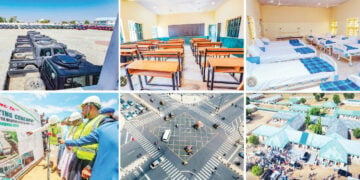Permanent secretary, Federal Ministry of Humanitarian Affairs, Disaster Management and Social Development, Dr. Nasir Sani-Gwarzo, has said that Disaster Risk Reduction is a collective business of all citizens of the country.
He made the remarks at the in-house fire awareness/prevention training programme organised by the humanitarian affairs department of the ministry, for its management cadre, held at the federal secretariat, Abuja.
Represented by the director humanitarian affairs department, Alhaji Ali Grema, the Permanent Secretary stated that the in-house fire drill and exercise was organised by the department in collaboration with the Federal Fire Service as part of the Humanitarian Affairs Department’s responsibility to raise awareness on mitigation and prevention of disaster risks in workplaces.
The Permanent Secretary emphasised fire safety awareness campaigns, saying it will help to prevent the loss of lives and properties due to fire hazards.
“It helps in identifying basic fire equipment and types or classes of fires as well as identify escape/ evacuation routes, methods of storing flammable items in homes and workplaces, and assistance to render in case of fire incidences.”
“It is worth reminding that Nigeria has had many incidences of fire hazards in homes and workplaces putting thousands at risk of losing lives and properties. The demonstrations on how to use various fire equipment will come in handy in an emergency to mitigate hazards/ disasters,” he added.
The resource person, Superintendent of Fire, Manu Sunday, took the participants through the theory and practical sections.
He said the objective of the training is to acquaint participants with the different classes of fire, fire extinction, types of extinguishers, and their uses.
He said for a fire to occur, certain elements must be present in the right proportion such as heat, oxygen, and fuel (The Fire Triangle) and extinguishing fire depends on the cause of the fire and the methods of extinguishing fire include starvation, smouldering, cooling, and inhibition.
He said firefighting equipment includes passive and active protection.





